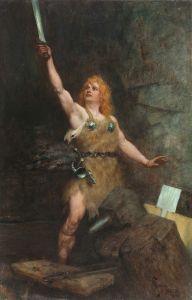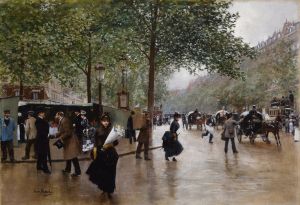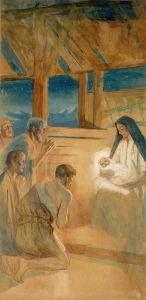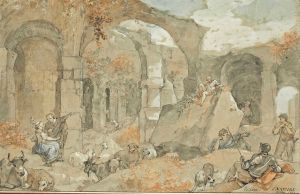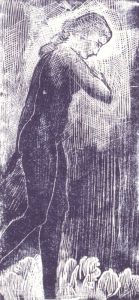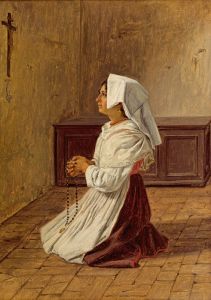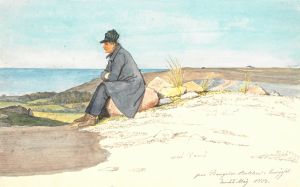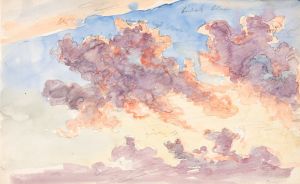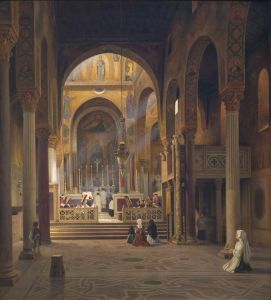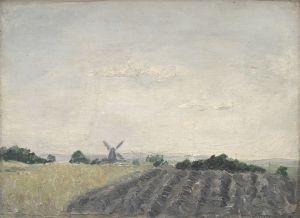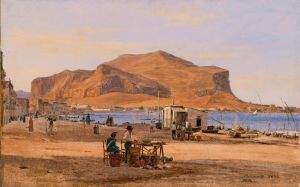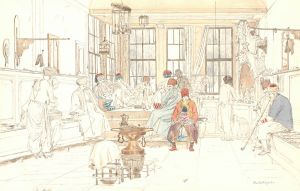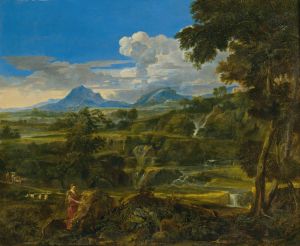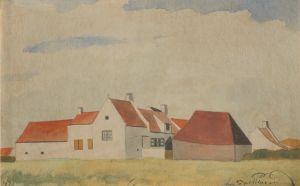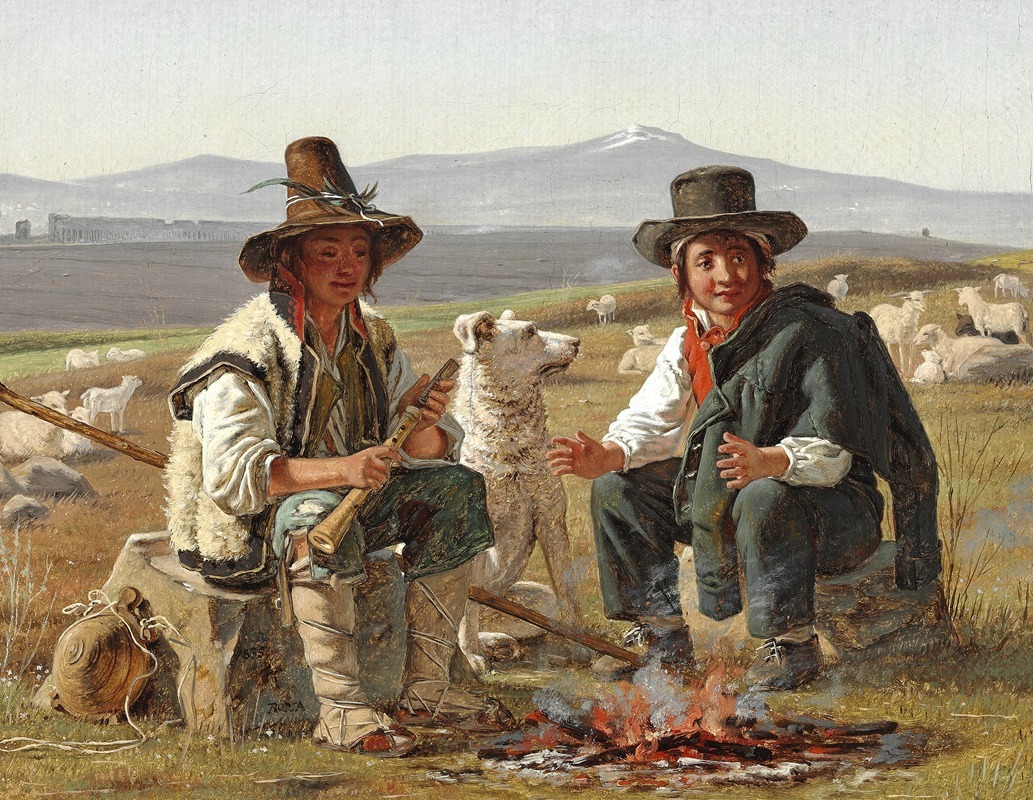
To italienske hyrdedrenge siddende ved ilden
A hand-painted replica of Martinus Rørbye’s masterpiece To italienske hyrdedrenge siddende ved ilden, meticulously crafted by professional artists to capture the true essence of the original. Each piece is created with museum-quality canvas and rare mineral pigments, carefully painted by experienced artists with delicate brushstrokes and rich, layered colors to perfectly recreate the texture of the original artwork. Unlike machine-printed reproductions, this hand-painted version brings the painting to life, infused with the artist’s emotions and skill in every stroke. Whether for personal collection or home decoration, it instantly elevates the artistic atmosphere of any space.
Martinus Rørbye's painting "To italienske hyrdedrenge siddende ved ilden," which translates to "Two Italian Shepherd Boys Sitting by the Fire," is a notable work by the Danish Golden Age artist. Rørbye, born in 1803 and deceased in 1848, was a prominent figure in Danish art, known for his detailed landscapes and genre scenes that often depicted everyday life with a sense of realism and intimacy.
The painting, created in 1833, is a fine example of Rørbye's ability to capture the essence of his subjects and their environment. It portrays two young shepherd boys seated by a fire, likely in an Italian rural setting. This work reflects Rørbye's interest in capturing the lives of ordinary people, a theme common in his oeuvre. The choice of Italian shepherds as subjects is indicative of Rørbye's travels and the influence of his experiences abroad on his art.
Rørbye was part of a generation of Danish artists who traveled extensively throughout Europe, particularly to Italy, which was considered an essential destination for artists seeking to study classical art and the picturesque landscapes of the region. His travels to Italy in the early 1830s provided him with ample inspiration and material for his works. The Italian countryside, with its unique light and vibrant culture, offered a rich tapestry for Rørbye to explore in his paintings.
In "Two Italian Shepherd Boys Sitting by the Fire," Rørbye employs a naturalistic style, focusing on the details of the boys' clothing, the texture of the landscape, and the warm glow of the fire. The composition is intimate, drawing the viewer into the quiet moment shared by the two figures. The use of light and shadow is particularly effective in conveying the warmth of the fire and the coolness of the surrounding evening air.
Rørbye's attention to detail and his ability to convey the mood of a scene are evident in this painting. The shepherd boys are depicted with a sense of realism that suggests Rørbye's keen observation skills and his empathy for his subjects. This work, like many of Rørbye's paintings, reflects the artist's interest in the human condition and his ability to portray it with sensitivity and depth.
The painting is also a testament to Rørbye's skill in landscape painting. The background, though not the focal point, is rendered with care, providing context and enhancing the overall atmosphere of the scene. The landscape serves as more than just a backdrop; it is an integral part of the composition, contributing to the narrative and emotional impact of the painting.
"Two Italian Shepherd Boys Sitting by the Fire" is housed in the Statens Museum for Kunst (The National Gallery of Denmark) in Copenhagen, where it is part of the museum's extensive collection of Danish Golden Age art. The painting is appreciated not only for its artistic merit but also for its historical significance, offering insight into the cultural exchanges and artistic practices of the 19th century.
In summary, Martinus Rørbye's "Two Italian Shepherd Boys Sitting by the Fire" is a compelling work that exemplifies the artist's talent for capturing the essence of his subjects and their environment. Through his travels and his art, Rørbye contributed significantly to the Danish Golden Age, leaving a legacy that continues to be celebrated today.





